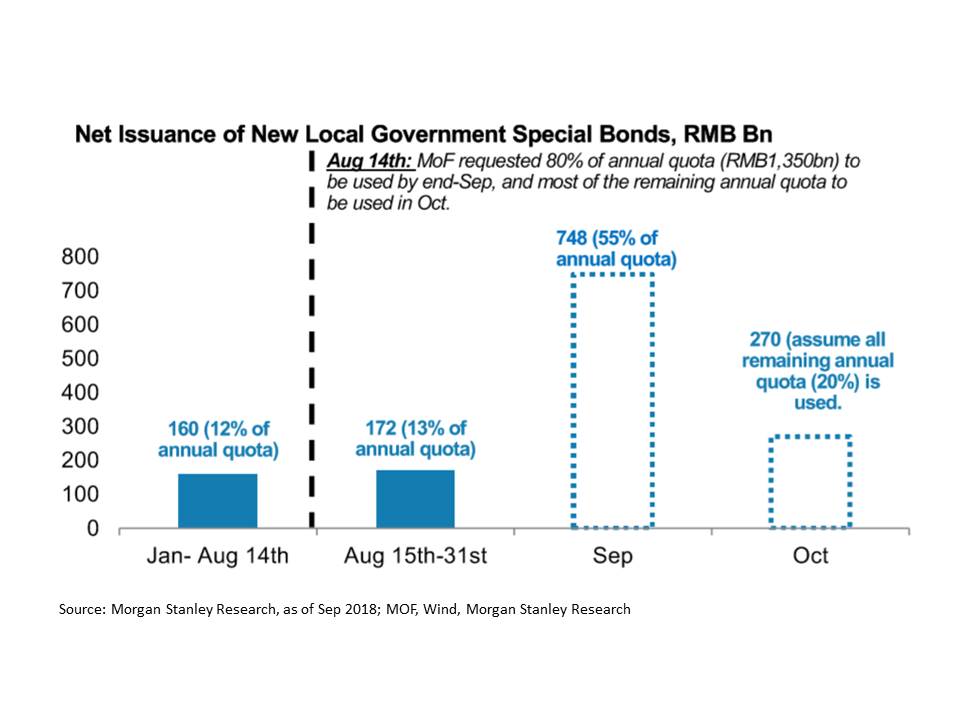
Recently, macro concerns such as the Sino-US trade tensions and the decelerating Chinese economy have been worrying the market. Another significant overhang is the situation surrounding pledged stocks in the A shares market.
Shareholders of listed companies can pledge their stocks to financial institutions such as brokerages, banks, and trusts in return for loans that are worth a percentage of the value of the pledged shares. In the past few years, more private enterprises have been engaging in this practice and the percentage of these pledged shares has been climbing for companies across the board.
The overhang of the market is that, as quite a number of stocks have dropped significantly, the market fears that it would trigger margin calls for those with pledged shares. If investors are not able to fulfill margin requirements, lenders will sell their pledged shares to close out their positions and in the process , it may cause the shares to drop further. Thus, a vicious cycle may form and cause a domino effect. Some major shareholders could end up losing control over their companies.
In recent weeks, new policies were released by regulatory authorities to address this market worry.
On October 22 , China Securities Regulatory Commission (CSRC) announced that 11 securities houses had reached a consensus to start a fund with RMB 21bn initial investment1. Each house will separately set up their sub-funds to raise money from banks, insurance companies, state-owned enterprises and government platforms etc., forming a fund with total scale of RMB 100bn to help some listed companies tackle liquidity problems1.
China Banking and Insurance Regulatory Commission (CBIRC) also allowed insurance asset management companies to set up special products to invest in listed companies’ securities. The investable universe includes stocks of listed companies, bonds issued by listed companies and their shareholders, non-public issuances of exchangeable bonds by shareholders of listed companies, and other assets approved by the CBIRC. Institutional investors such as insurance companies and social security funds are usually the main source of fund for special products.The first product was reportedly set up by a large state-owned insurance company on October 29 whose scale was expected to reach RMB 20bn2.
Securities houses are required to obtain approvals from the CSRC before they execute forced-selling of the pledged shares. The purpose of this measure is to make sure any collateral-selling will be conducted in an orderly manner. At the same time, we think that the over-seeing of the selling activities might ensure there is minimal conflict of interest between the pledgees and the pledgers.
It is apparent that this risk in the market is well understood by the government and we believe that it has placed a high priority to contain it. Unlike the messy downward spiral that occurred in 2015 after the government cracked down on buying stocks on leverage, the situation concerning pledged stocks is much more transparent in terms of the scale and the parties involved. Hence, our base case is that the government will be able to contain the situation.
[1] Source: Xinhua net, as of Oct 2018
[2] Source: Jiemian, as of Oct 2018
This document is based on management forecasts and reflects prevailing conditions and our views as of this date, all of which are accordingly subject to change. In preparing this document, we have relied upon and assumed without independent verification, the accuracy and completeness of all information available from public sources. All opinions or estimates contained in this document are entirely Zeal Asset Management Limited’s judgment as of the date of this document and are subject to change without notice.
Investments involve risks. You may lose part or all of your investment. You should not make an investment decision solely based on this information. If you have any queries, please contact your financial advisor and seek professional advice. This document is issued by Zeal Asset Management Limited and has not been reviewed by the Securities and Futures Commission in Hong Kong.




